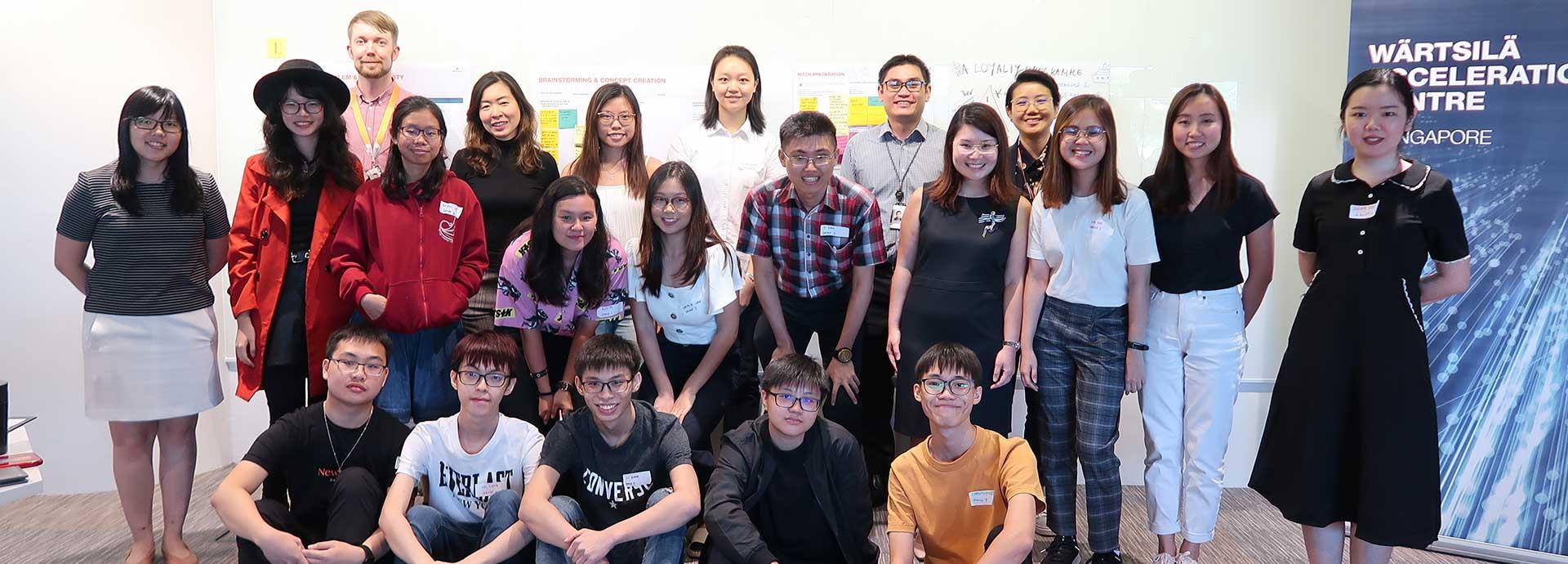

On 9 October, Wärtsilä's Singapore-based Open Innovation and Voyage Solutions team invited a group of design students from four local schools — Singapore University of Technology and Design (SUTD), National University of Singapore (NUS) and Singapore Polytechnic (SP) — to spend the afternoon at the Wärtsilä Acceleration Center learning more about the maritime industry in Singapore and what role design plays in it.
Christopher Choi, a third-year User Experience and Product Design student at SP, said he considered working as a marine engineer before deciding to study design, and he was interested to learn about the intersections between the two areas.
“With UX design, I can help make work easier both at sea or in ports. At the Wärtsilä open house, I got to try my skills in a design workshop concentrating on tugboats and improving its communication with vessels that arrive into the port of Singapore," said Choi.
Most of the students were unfamiliar with Singapore’s maritime industry before the workshop. Joanne Lin, a Service Designer at Wärtsilä Singapore said one of the goals of the event was to inform the students about the industry and what design can contribute to it.
"For us, in Wärtsilä, design has been a crucial element in the projects run out of our Singapore Acceleration Centre and we are eager to further explore and strengthen the role of human-centred design in our work,” said Lin.
Talks given by Ang Shi En from the Singapore Maritime Foundation (SMF), Mikael Leppä, Design Director, and Chris Chung, Director of Ecosystem Development, Voyage Solutions, helped give the students more information about the importance of design work in the maritime ecosystem.
Lin also spoke about her work as a Service Designer on the Intellitug project.
"We are partnering with PSA Marine, the Maritime and Port Authority of Singapore (MPA) and other ecosystem partners to enhance the capabilities of the harbour tug by combining some of the most advanced Smart Marine technologies and putting them to the service of PSA Marine's Tug Masters,” said Lin.
“My role as a designer is to firstly understand and then share with the rest of the team the Tug Master's job to be done, help them understand how the technology would impact current ways of working and be involved in co-creating the user experience and interface with the users and developers. I focus on the human factors side of things, and work with my team to deliver a user-friendly system that the Tug Masters would be excited to use and adopt easily.”
Sparking innovation
The participants also had the opportunity to brainstorm with students from other schools and Wärtsilä designers on solutions for maritime topics. The students broke into groups to work on problems such as how the port of Singapore’s competitiveness could be affected by the opening of the Northern Sea Route.
The workshop was one of the best parts of the event, according to participants.
"I enjoyed having students from different fields come together to explore a new field and to come up with new solutions. We got a glimpse of the marine industry in Singapore," noted Ryann Yeo, an Architecture and Sustainable Design student SUTD.
Kylie Ng, an Experience and Product Design student at SP, also enjoyed the workshop.
"I got really excited, and now I want to do even bigger products and bigger experiences to help people," she said.
The Wärtsilä experts are also hopeful that the experience will encourage some of these future designers to consider a career in the marine industry.
"We operate in ecosystems with multiple players, all playing a vital role. We hope that this experience was a good opportunity for the upcoming generation of designers to explore whether the maritime industry is the place for them one day,” said Chris Chung. “I'm confident that we will be seeing these faces transforming the maritime industry with their design skills in the coming years.”


